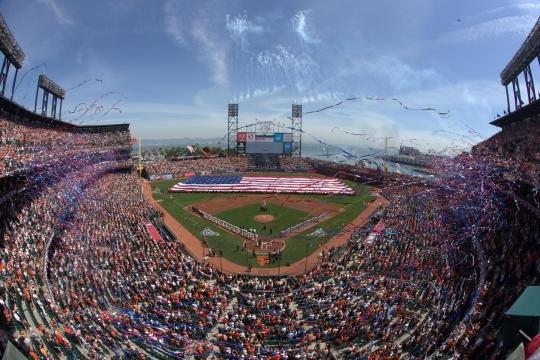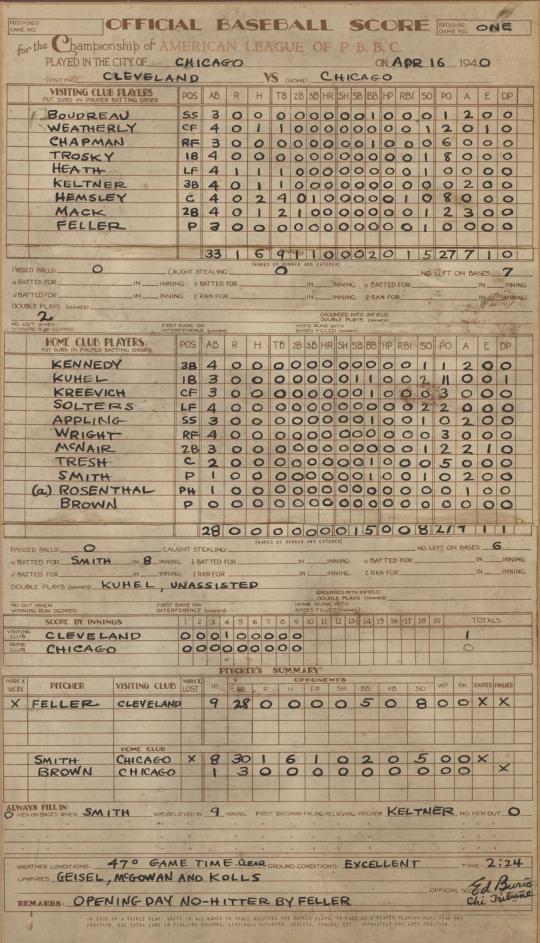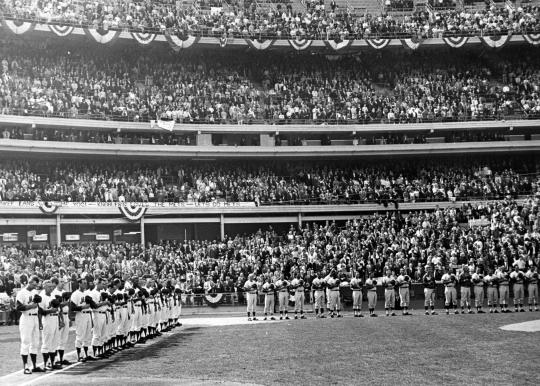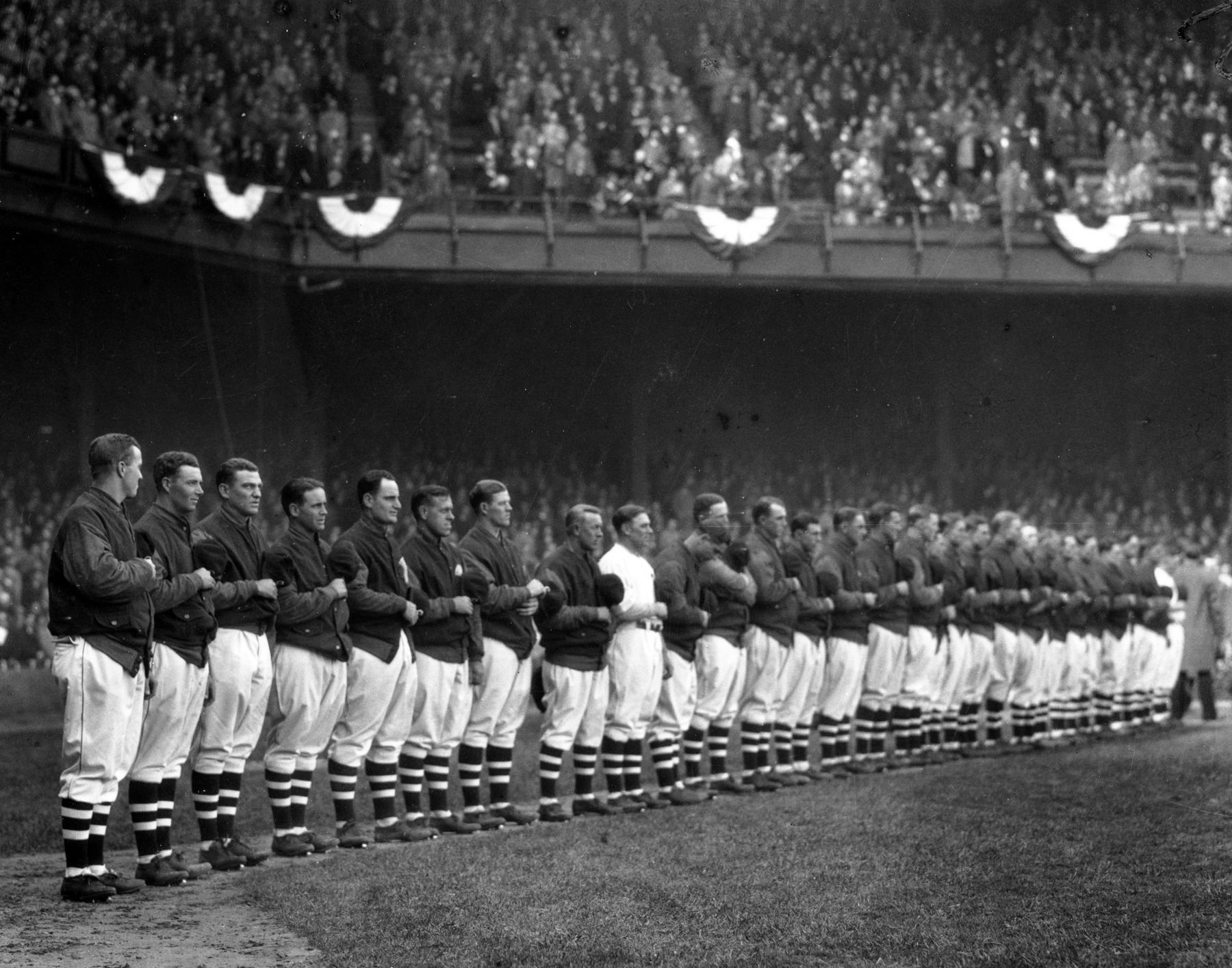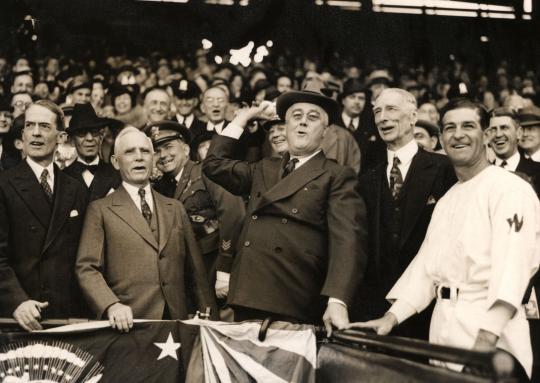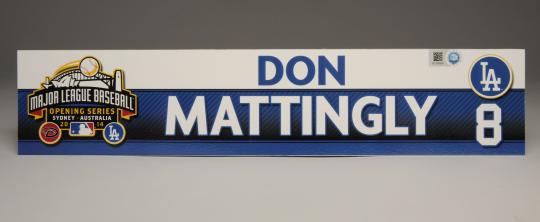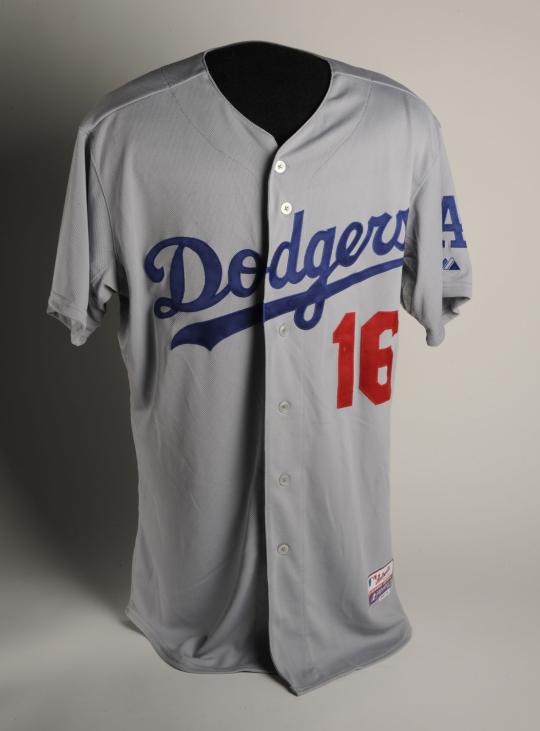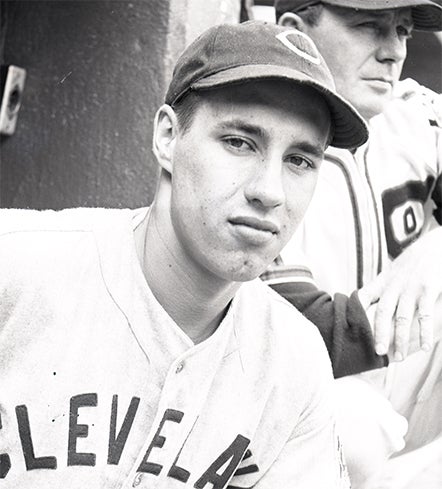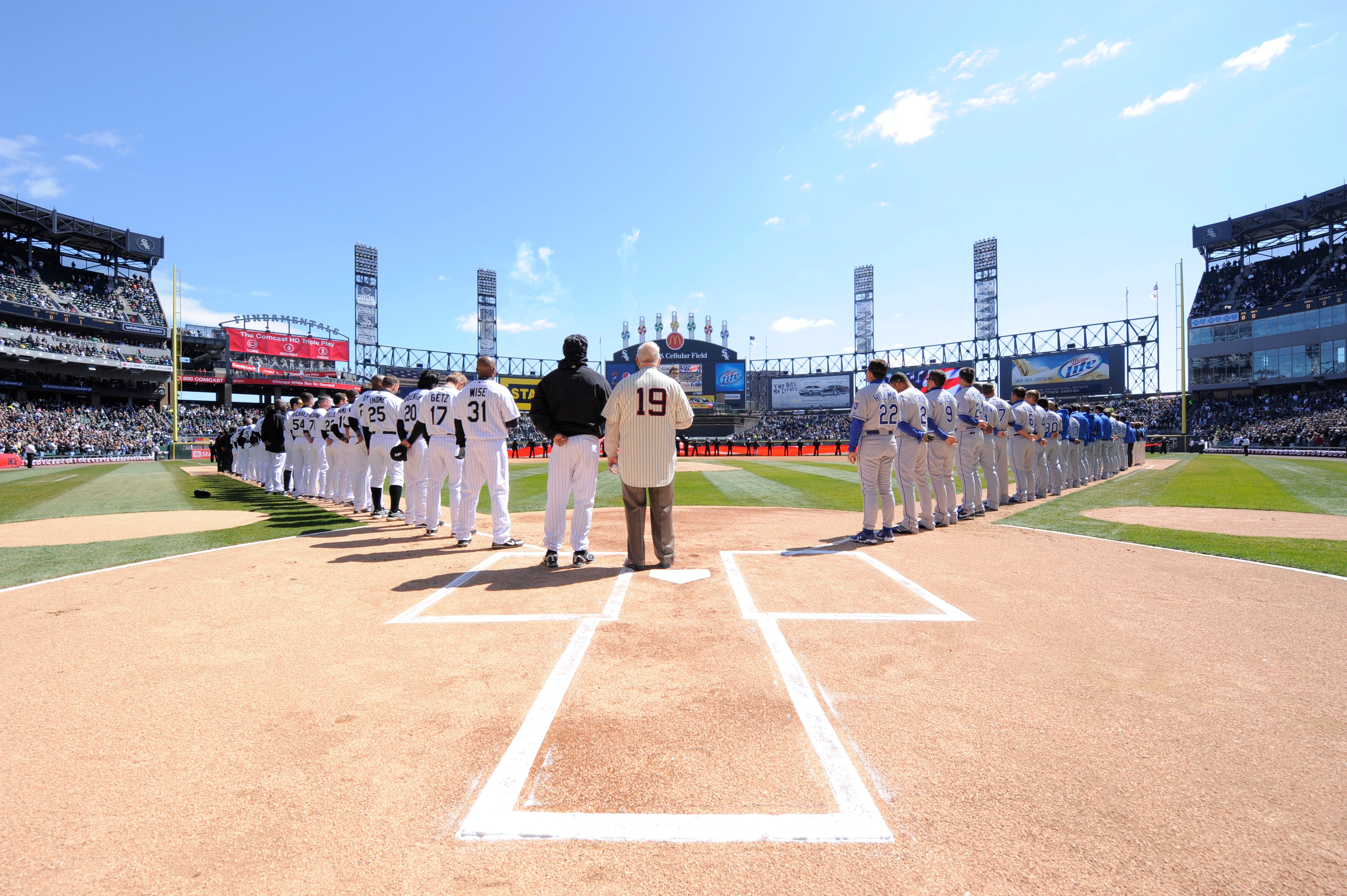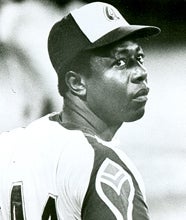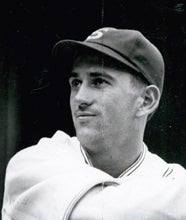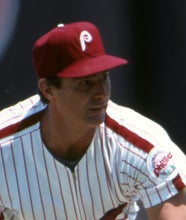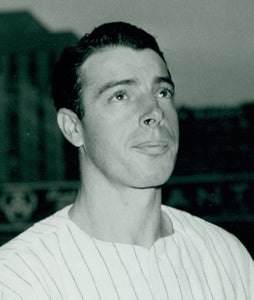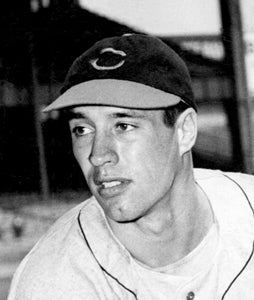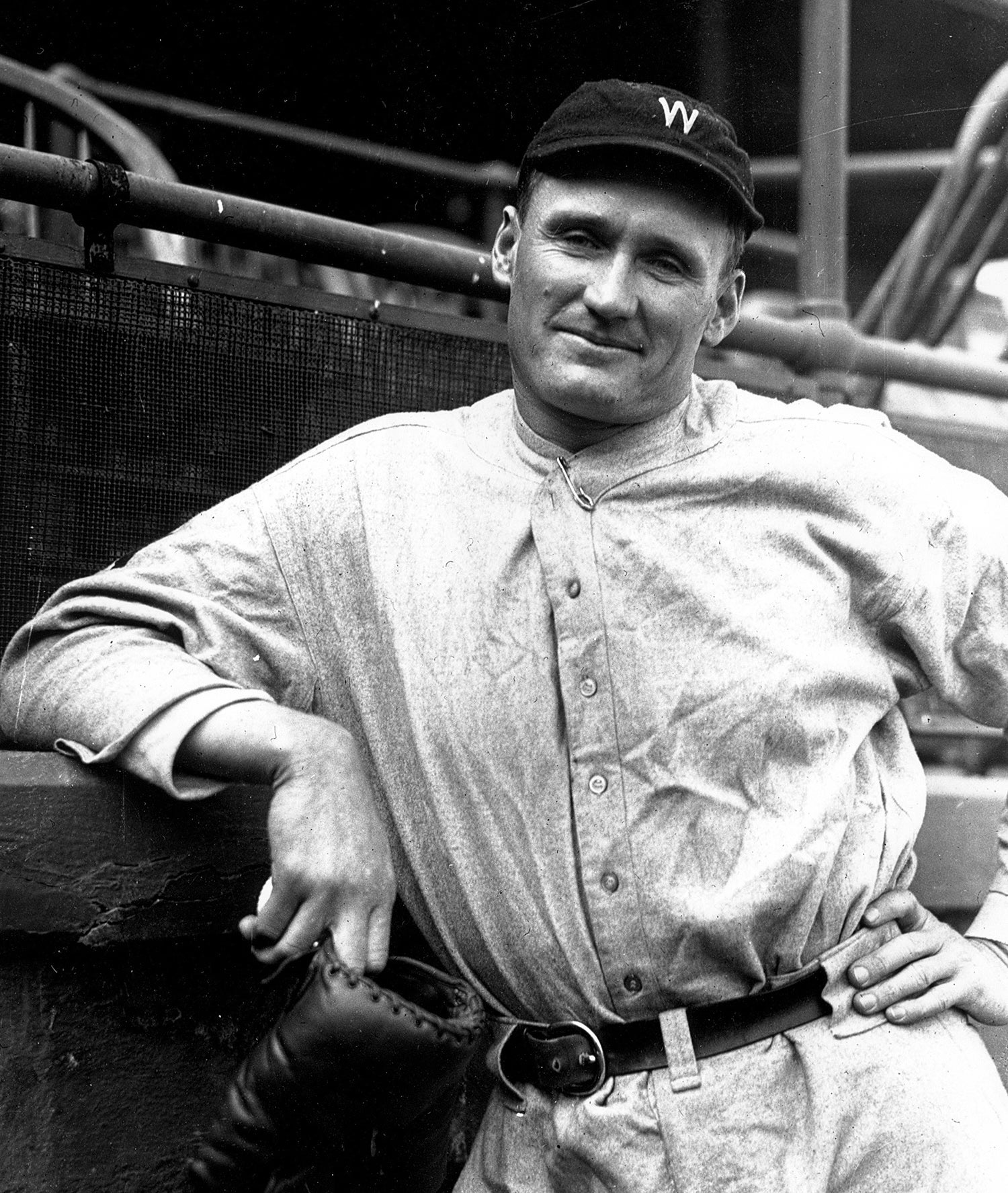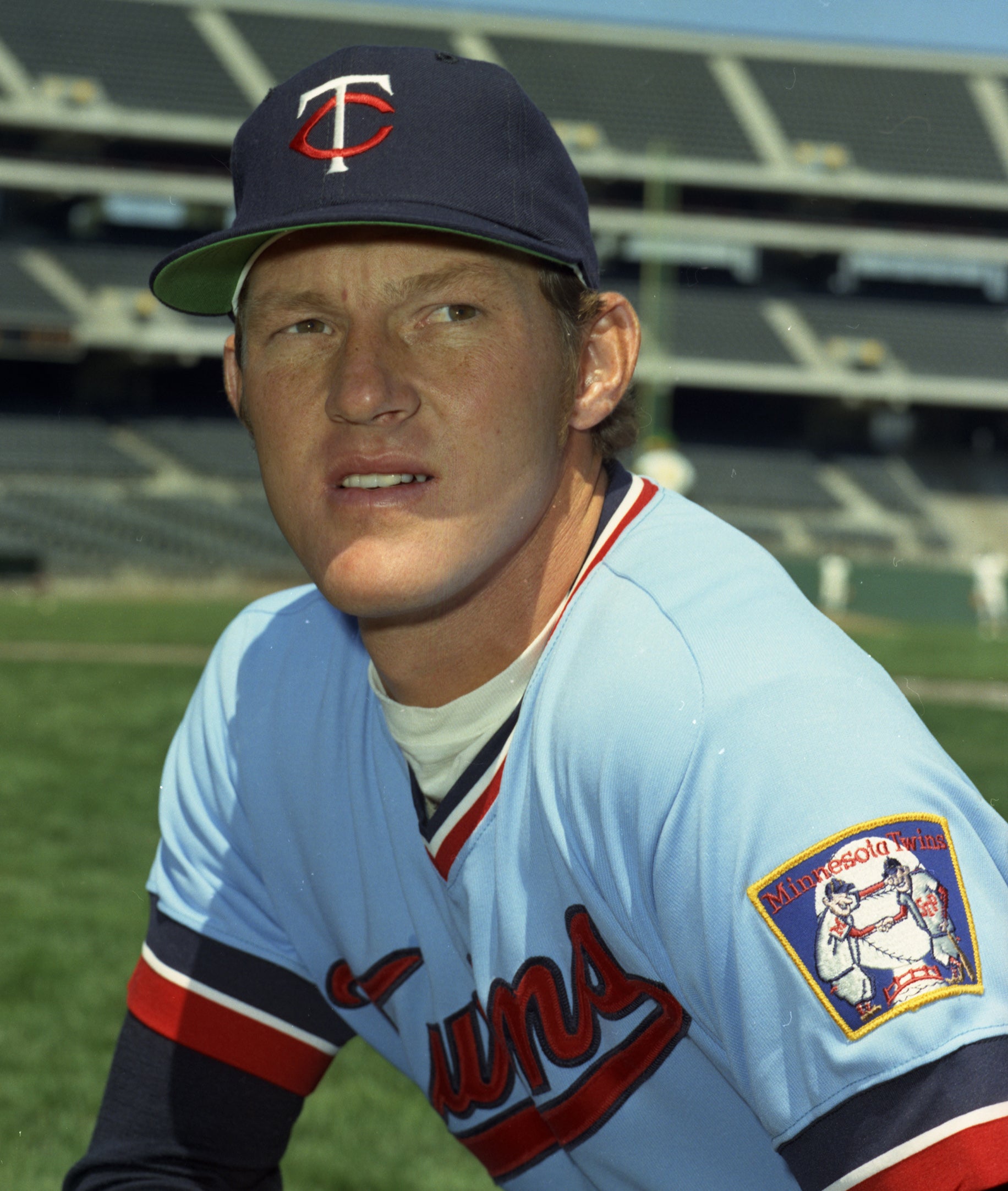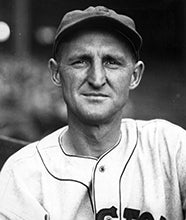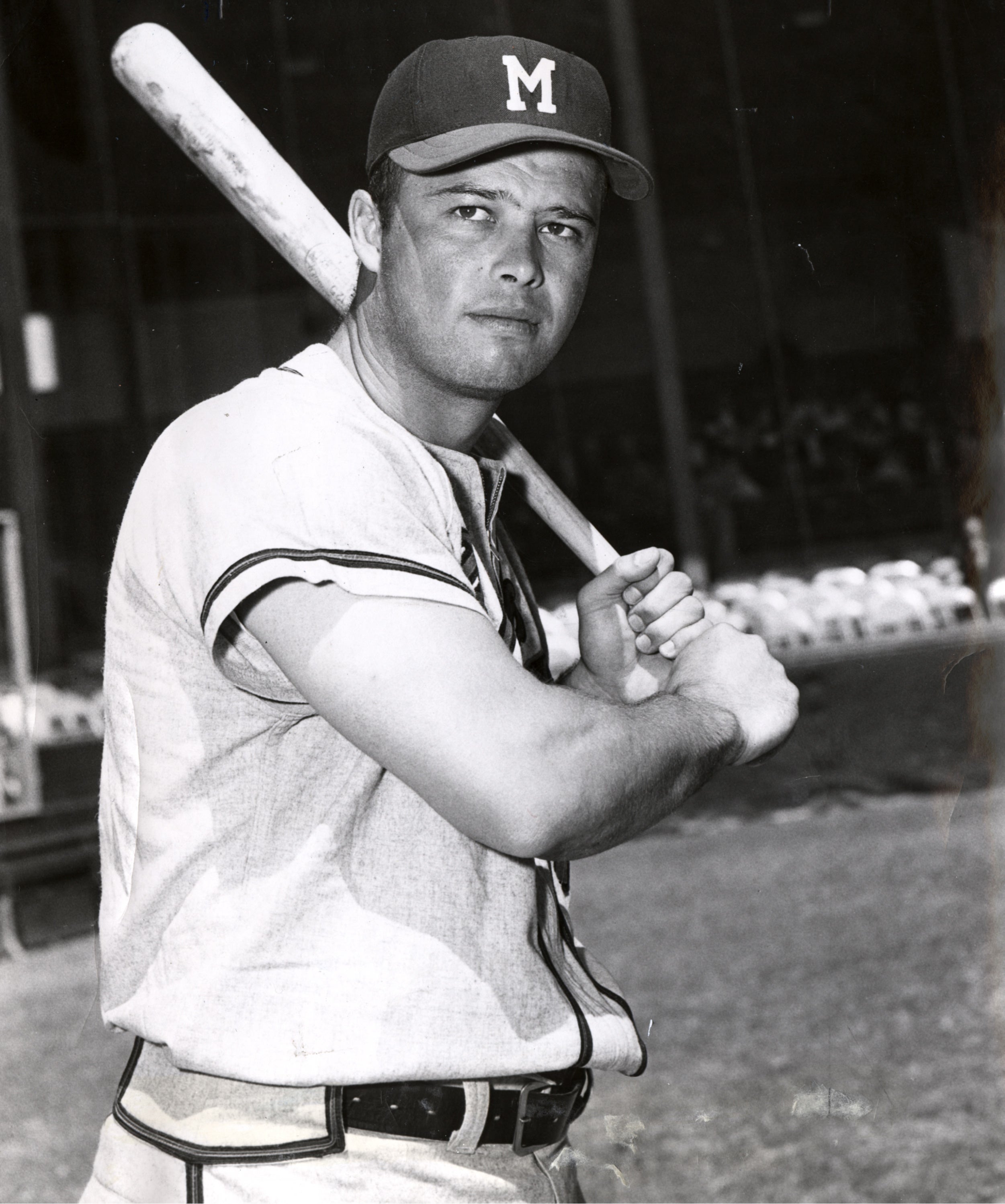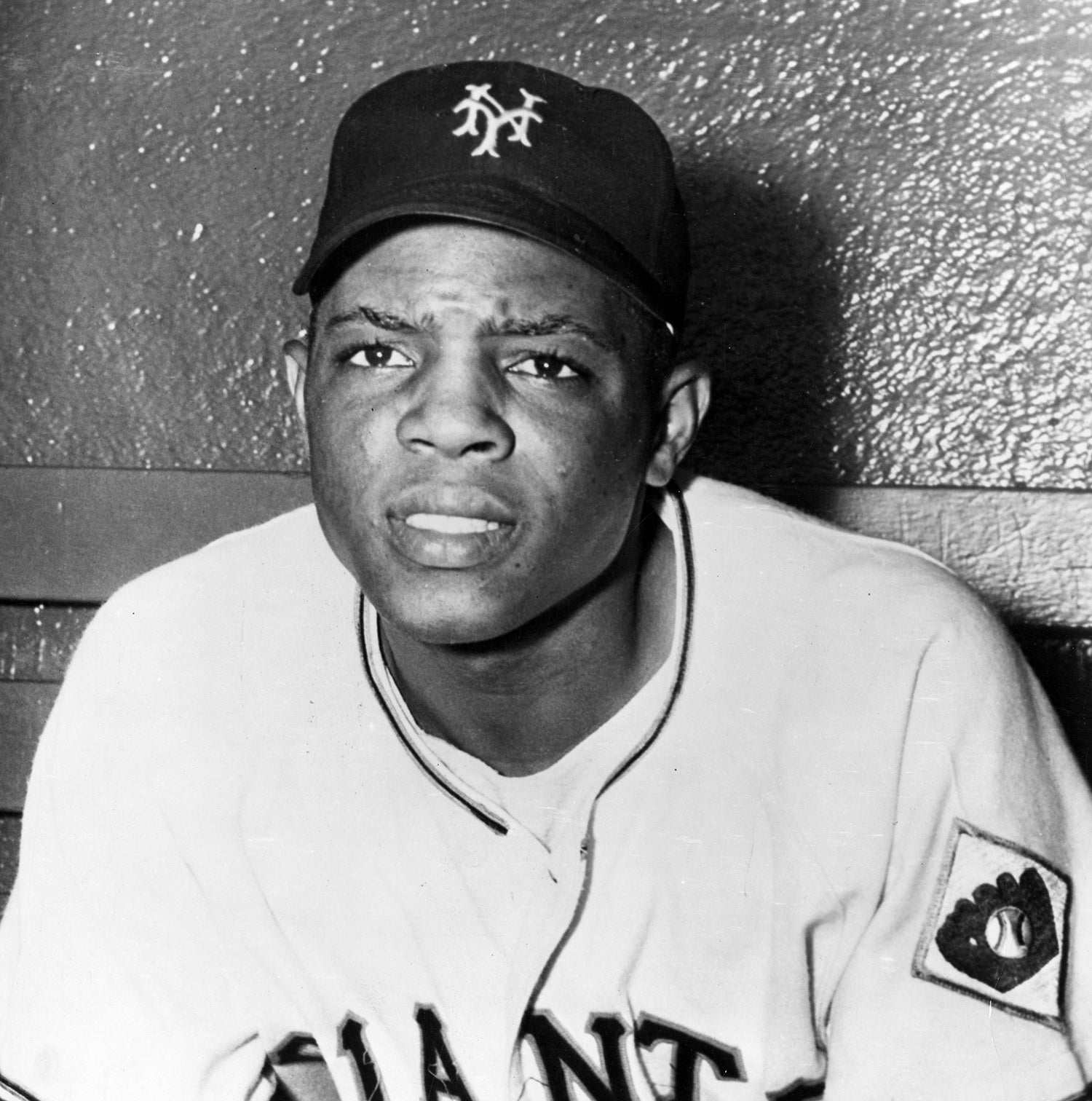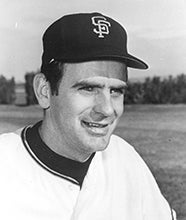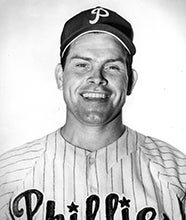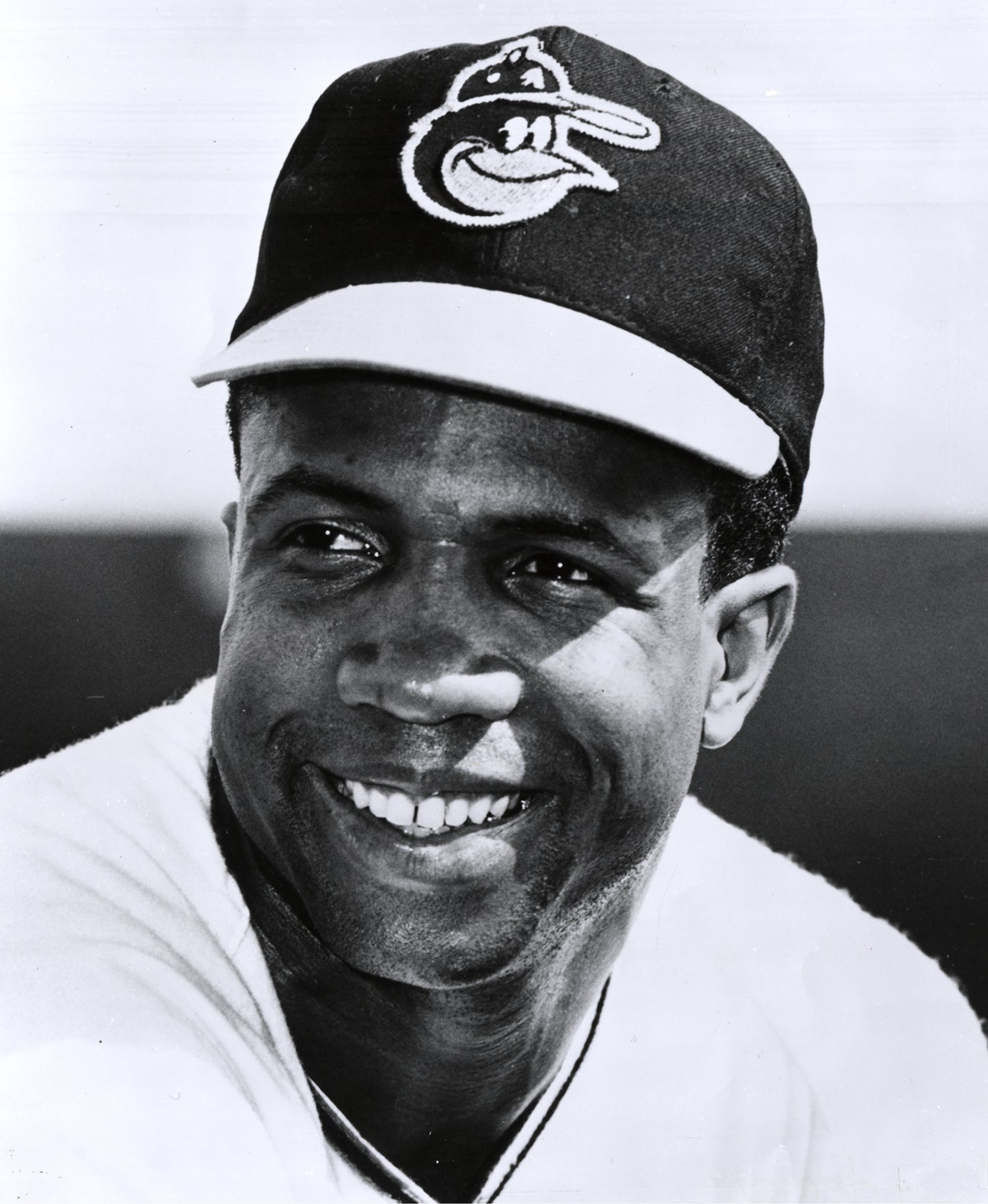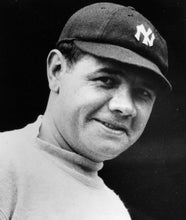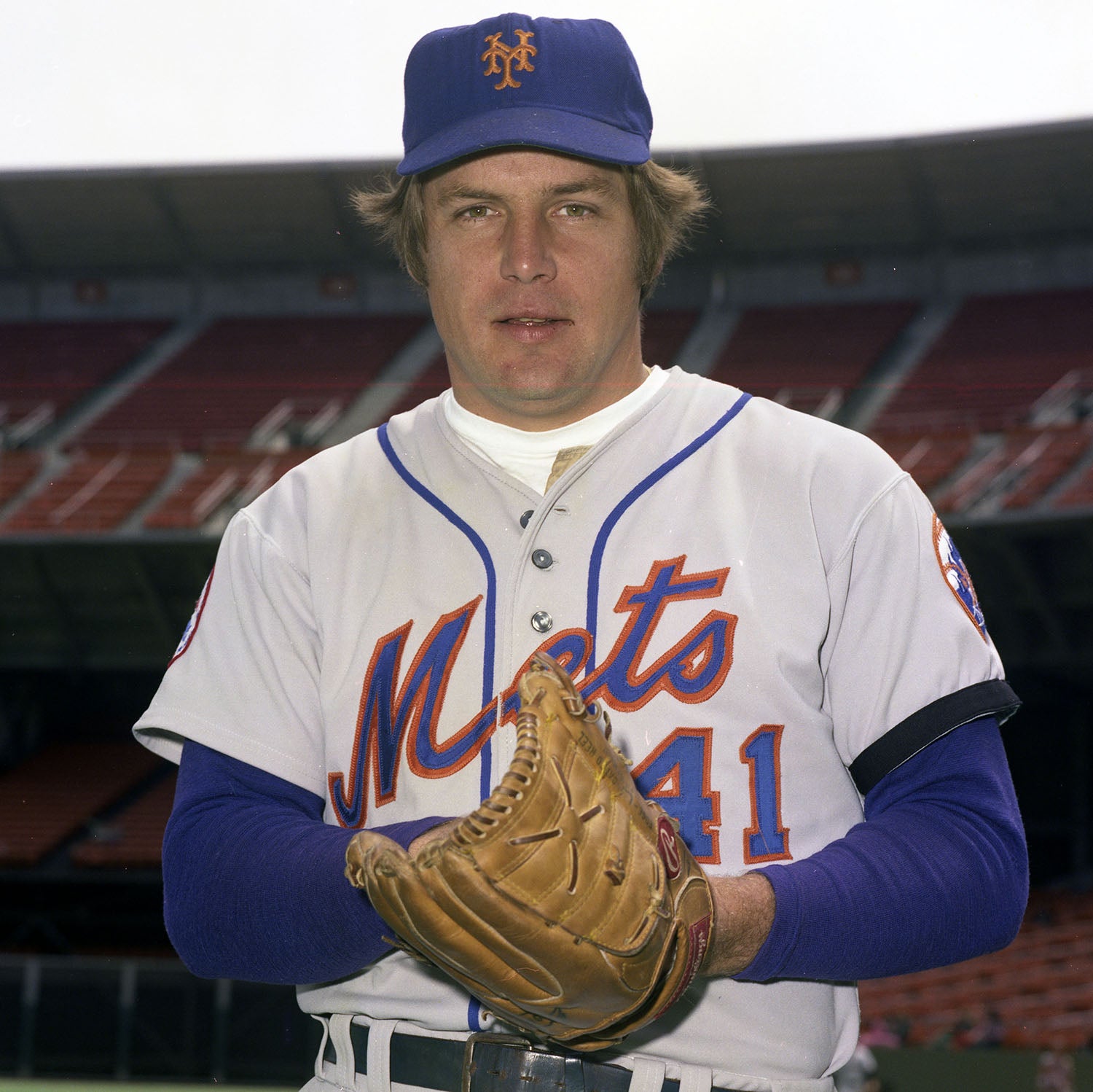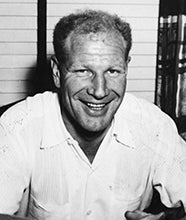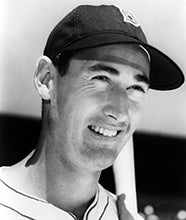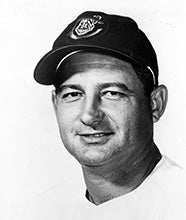"An opener is not like any other game, there's that little extra excitement, a faster beating of the heart."
- Home
- Our Stories
- Opening Day
Opening Day
Even for the greatest players baseball has ever known, Opening Day is something special.
The butterflies will be floating for every player – even those on their way to Cooperstown and the Hall of Fame.
"You always get a special kick on Opening Day, no matter how many you go through," said Yankees legend and Hall of Fame center fielder Joe DiMaggio. "You look forward to it like a birthday party when you're a kid. You think something wonderful is going to happen."
Other sports have season openers, but baseball's Opening Day marks the ceremonial beginning of spring. Considered by many to be a national holiday, the opening of a big league baseball season brings with it the hope that this is your team's year.
Whether it's the first pitch or the first ballpark hot dog of the season, Opening Day is a cause for optimism, hope, and for some, even a reason to call in sick to work or school.
It may only be 1/162nd of the season, but fans and players alike feel a unique anticipation. Opening Day may be the beginning of a fairy tale season for your favorite team, the debut of a Hall of Famer, the unveiling of a new ballpark, or a spectacular performance, like a no-hit game.
That's exactly what happened in 1940.
On April 16, 1940, 21-year old Bob Feller threw the first Opening Day no-hitter, shutting down the White Sox at old Comiskey Park, 1-0. It was all the more remarkable considering the temperature was a chilly 35 degrees at game time.
In 1990, on the 50th anniversary of his feat, Feller recalled the details of that game.
"I remember my last outing was an exhibition game in Cleveland on Saturday and I was hit hard. I had pitched very poorly, but on Opening Day I felt in good condition.
"The first couple of innings I was pretty wild. In the second inning, I loaded the bases. Someone in the bullpen was warming up and the manager (Ossie Vitt) was getting ready to walk out to the mound. But I managed to strike out the last hitter on a full count."
Feller also faced a challenge against White Sox' shortstop and future Hall of Famer Luke Appling, who fouled off 15 pitches in one at-bat before he was retired.
The no-hitter wasn't Feller's only success opening the season during his Hall of Fame career. The right-hander notched three shutouts in seven starts on Opening Day.
Red Ames, who lost a heartbreaking Opening Day game for the Giants in 1909 when he held Brooklyn without a hit for 9 1/3 innings, also flirted with no-hit fame in his next two openers. In 1910, Ames threw seven no-hit innings before allowing a hit; and in 1911, Ames fired six no-hit innings on Opening Day. Incredibly, Ames lost all three of his near no-hit Opening Day performances, helping to earn him the unfortunate nickname, "Calamity."
On April 14, 1915, Philadelphia A's hurler Herb Pennock made a bid for Opening Day history. A crafty left-hander, Pennock no-hit the Boston Red Sox for 8 2/3 innings. In the ninth, with Pennock one out away, outfielder Harry Hooper beat out a high grounder past Pennock toward the middle of the infield, ruining what could have been the first Opening Day no-hit game.
Other hurlers who took a run at no-hit Opening Day immortality include Lon Warneke, who went 8 1/3 hitless innings on April 17, 1934, for the Cubs, before Cincinnati's Adam Comorosky collected a hit. Hall of FamerRobin Roberts came close to matching Feller's feat on April 13, 1955, when he carried a no-hitter 8 1/3 innings before Giants' infielder Alvin Dark spoiled his bid with a single.
Roberts holds the major league record for most consecutive Opening Day starts for the same team (12), starting every Opening Day for the Philadelphia Phillies from 1950 to 1961. Upon his induction to the Hall of Fame in 1976, Roberts pegged the 1950 opener as one of the greatest Opening Day thrills of his career.
"I'd have to pick the 1950 opener when we beat the Dodgers, 9-1, as the most thrilling for me from a team standpoint," Roberts said. "We had finished well in 1949 and we had pennant hopes in 1950, so that first game made us all proud."
Tom Seaver also started 12 straight openers, but with two different teams: the Mets and Reds. Jack Morris came within an eyelash of tying Roberts' mark of 12 straight with one team. Morris started 11 straight openers for Detroit from 1980 to 1990, before tacking on three more for Minnesota and Toronto. Morris' 14 straight Opening Day starts are a record.
Seaver holds the record for most overall Opening Day starts, with 16. He pitched 11 for the Mets, three for the Reds and two for the White Sox. "Tom Terrific" proved successful opening the season, posting a 7-2 record.
Steve Carlton started 14 of 15 openers for the Phillies from 1972 to 1986, missing only the 1976 tilt when Jim Kaat got the nod.
The major league attendance record for an Opening Day game is 74,420 at Cleveland's Municipal Stadium, on April 7, 1973. Gaylord Perry satisfied the huge home crowd with a 2-1 victory over Mickey Lolich and the Detroit Tigers.
Perry holds the record for starting Opening Day games for five different teams. Perry toed the rubber to start the season for the Giants, Indians, Rangers, Padres and Mariners.
Walter Johnson may have been the most successful pitcher on Opening Day in baseball history. Johnson started 14 season openers for the Washington Senators, hurling a record seven shutouts. His overall Opening Day mark was 9-5, and his 14 starts were a record until bested by Seaver.
Johnson's two most famous Opening Day performances occurred in 1910 and 1926. On April 14, 1910, "The Big Train" pitched a masterful one-hitter to defeat the A's, 3-0. The only hit occurred in the seventh inning when Senators' right fielder Doc Gessler tripped over a small child sitting on the edge of the warning track, allowing the ball to careen into the overflow crowd for a double. On April 13, 1926, Johnson made his 14th and final Opening Day start, battling 15 innings against Philadelphia's Eddie Rommel, before winning 1-0.
Jimmy Key holds the record for most wins on Opening Day without a loss, with seven. Other perfect Opening Day hurlers: Wes Ferrell at 6-0, and Warneke and Rip Sewell both with 5-0 ledgers.
As the game's first fully professional club, the Cincinnati Reds were awarded the right to begin every National League season at home, and also traditionally hosted the earliest openers. From 1876-1989, every Reds opener was scheduled at home, but twice, in 1877 and 1966, rain forced the team to play their first tilt on the road. Finally, in 1990, their streak ended when the Reds opened the season on the road in a scheduled game against the Houston Astros. The extraordinary tradition included parades, fireworks, and circus performances.
In 2003, the Reds opened their new stadium, Great American Ball Park, but it wasn't the first time that fans in the "Queen City" had new digs for Opening Day. In 1902, Cincinnati christened a much-anticipated new grandstand, replacing the wooden seats that had been damaged in a fire two years earlier. The 3,000-seat iron and concrete grandstand earned the name the "Palace of the Fans," and boasted a blend of Roman and Greek architecture unseen in any ballpark previously.
Included were two dozen higher-priced "fashion boxes" that held 15 or more fans. "Rooter's Row," a standing-room only section, was located beneath the grandstand and housed more than 500 fans, who became known for their raucous support of the home team. Despite the new grandstands, the Reds succumbed to the Chicago Cubs that day.
Cincinnati was so protective of their traditional opener status that in 1988 the city council voted to turn back the clocks in Cincinnati on Opening Day, to ensure that the Reds played the "first" game of the season.
Hall of Fame Membership
There is no simpler, and more essential, way to demonstrate your support than to sign on as a Museum Member.
Hank Aaron began the 1974 season in Cincinnati with a home run in his first at-bat. It was his 714th home run and tied Babe Ruth's career total.
Opening Day became an even more special day in Washington D.C. starting on April 14, 1910, when President William Howard Taft attended the home opener at League Park in the nation's capital. In the Hall of Fame's collections are balls thrown by Taft, Herbert Hoover, Franklin D. Roosevelt, Harry Truman, Dwight Eisenhower and Lyndon Johnson, and a glove used by Eisenhower at Opening Day in 1956. Truman was ambidextrous and threw out first pitches in 1950 with both his right and left hands. Taft and Woodrow Wilson brought the best luck to the Senators, posting 3-0 and 2-0 "records" in their Opening Day appearances, while Herbert Hoover was 1-3 and Lyndon Johnson 0-3.
When the Senators left Washington after the 1971 season, presidents frequently thrown out the first pitch for other teams. Since Taft, only one president has failed to throw out a first pitch at a major league contest at least once while he was in office: Jimmy Carter. But Carter's brother Billy did heed the call, tossing out the first pitch for Charlie Finley's Oakland A's in 1977.
The expansion Montreal Expos played their first opener on April 8, 1969. That day, the first home run in Expos history was hit by a pitcher, Dan McGinn, who had also once been a placekicker for Notre Dame. Less than a week later, McGinn won the Expos home opener, thus becoming the first man to win a major league game on foreign soil.
Seattle pitcher Mike Parrott started and won the Mariners' 1980 opener, but never won another game all season, finishing with a 1-16 record.
In March of 1979, the owners of the San Diego Padres and San Francisco Giants announced that they would open the 1980 season against each other in Japan. The three game series was tentatively scheduled for March 28-30, 1980, in Tokyo. However, when National League owners met to approve the plan, a consensus could not be met and the idea was scrapped. Not until 1999 did the major leagues play regular season games outside the U.S. and Canada to open the season.
That year, the Rockies and Padres played their opening series in Monterrey, Mexico. The following season, the Cubs and Mets opened in Tokyo, Japan, and in 2001, the Blue Jays and Rangers kicked off the campaign in San Juan, Puerto Rico. Games scheduled for Japan to start the 2003 season were cancelled by Major League Baseball in March. In 2004, the New York Yankees and Tampa Bay Devil Rays became the next to open the season in Japan with a series of games in Tokyo, followed in 2008 by the Boston Red Sox against the Oakland A's, and 2012 with the Oakland A's facing the Seattle Mariners.
The 2014 MLB season began with two games in Australia between the Dodgers and the Diamondbacks. Most recently, the Cubs and Dodgers opened the 2025 season in Tokyo, with Japanese stars Shota Imanaga, Roki Sasaki, Seiya Suzuki, Shohei Ohtani, Yoshinobu Yamamoto taking center stage.
Joe Torre is the only player to hit two home runs on Opening Day in back-to-back seasons. On April 12, 1965, at Cincinnati, Torre went deep twice for the Milwaukee Braves, and the following season he duplicated the feat against Pittsburgh on the same date, April 12, in Atlanta.
The 1982 Atlanta Braves, managed by Torre, opened the season with 13 consecutive wins, a record tied by the 1987 Milwaukee Brewers. In 2009, Torre managed the Dodgers to 13 straight home wins from the start of the season, the most since 1886.
Torre managed the Dodgers to 13 straight home wins from the start of the season, the most since 1886.
Ted Williams was extra special on Opening Day. The last man to hit .400 in a full-season, Williams was a .449 hitter in Opening Day games, with three home runs and 14 RBI in 14 games. Williams had at least one hit in every Opening Day game he played.
Sixto Lezcano belted three grand slams in his career, and two of them came in Opening Day action for the Milwaukee Brewers. In 1978 and 1980, Lezcano helped the Brewers to Opening Day victories with bases-loaded homers.
On April 6, 1982, Opening Day at the new Metrodome, Gary Gaetti nearly became the first player to hit three home runs in an opener. The rookie third baseman went deep in the fourth and seventh innings and in the second inning he tripled and was thrown out at home plate trying for an inside-the-park homer.
Only four batters have hit three homers in an opener. George Bell did so on April 4, 1988, when he hit all three of his home runs off Kansas City's Bret Saberhagen. The second player was Karl "Tuffy" Rhodes, who launched three homers off Dwight Gooden of the Mets on April 4, 1994, in Wrigley Field. After Rhodes third homer, Cubs' fans threw hats on the field, reminiscent of hockey fans homage to the hat trick. Tuffy's shots made little difference - the Cubs still lost the game. The Tigers' Dmitri Young and White Sox' Matt Davidson has since joined this exclusive group.
On April 7, 1986, Boston's Dwight Evans hit Jack Morris' first pitch of the first game of the season into the seats at Tiger Stadium for the earliest possible home run in baseball history.
Nolan Ryan is the oldest pitcher to start an Opening Day game. In 1993 he was 46 years old when he toed the rubber for the Texas Rangers. Tommy John was 45 years old when he started and won the 1989 opener for the Yankees.
No batter ever hit more home runs on Opening Day as Frank Robinson. The Hall of Fame outfielder belted eight career home runs on the first day of the season, while Willie Mays and Eddie Mathews each blasted seven Opening Day homers. Robinson's final Opening Day homer, for Cleveland on April 8, 1975, came as a player/manager in his first at-bat in that role, as he became the first African-American manager in major league history. In addition to his record for most Opening Day homers, no other batter has equaled Robinson's feat of hitting Opening Day homers for four different teams.
Some Opening Days have been marked by bizarre events, strange promotions, bad weather or a combination of all three. On April 11, 1907, the New York Giants opened the season in the Polo Grounds against the Phillies. The day before, a heavy snow had fallen and groundskeepers shoveled the snow into large piles in the outer reaches of the outfield and in foul territory. Late in the game, with the Giants trailing 3-0, the home crowd grew frustrated with the play of their team and began throwing snowballs onto the playing field, disrupting play. Soon, the situation grew chaotic as fans swarmed the field and pelted each other with snowballs, refusing to leave when confronted by police. Home plate umpire Bill Klem grew tired of the shenanigans once he was hit with a snowball, and forfeited the game to the Phillies.
On April 5, 1974, fans used different tactics to disrupt Opening Day in Chicago's Comiskey Park when several fans "streaked" onto the field. Numerous fights broke out in the stands before order was restored.
"I never saw anything like it," said White Sox manager Chuck Tanner. "If it goes beyond Opening Day, the average fan couldn't take it." There were no more reports of naked fans rushing onto the field in Chicago that season.
On April 11, 1912, Washington Park in Brooklyn was the scene of another Opening Day riot. With the home team down 18-3 to the rival Giants, fans began climbing the fences and running onto the playing field. Eventually, so many spectators infiltrated the diamond and slowed play, that the game was called on account of darkness in the sixth inning.
The Philadelphia Phillies earned a reputation for unique promotions for their home openers in the 1970s. At various openers, fans were thrilled by "Parachute Man," who landed on the field prior to the first pitch; "Rocket Man," who was propelled by a rocket pack over the playing field; "Kite Man," who soared far above the stadium; "Cycle Man," who roared over the artificial surface on a high-speed motor bike; and the "Great Merrifield," an acrobat who performed stunts while suspended beneath a helicopter.
On Opening Day in 1977, the Astros took their "shot" at contending with the Phillies, when they introduced "The Human Cannonball," who was fired from a cannon at a reported 100 miles per hour into a nylon net.
Prior to the White Sox' opener on April 9, 1976, owner Bill Veeck, manager Paul Richards, and longtime Veeck associate Rudy Schaffer dressed in Revolutionary War costumes and marched from center field to home plate as a fife and drum corps. Years earlier with the Cubs, Veeck had implemented one of his more famous stunts on Opening Day, when he employed midgets as vendors in Wrigley Field. Veeck figured the midgets wouldn't block the view of the field as they sold their wares. It seemed like a good idea, however, Veeck didn't plan for the fact that the beverage trays were very heavy, and by the middle innings, according to then Cubs' broadcaster Jack Brickhouse, "The beer, soft drinks, and midgets were dropping all over the place."
Opening Day stunts are not limited to the major leagues. The Little Falls Mets of the New York-Penn League planned to have four parachutists land on their field and deliver the first pitches of the season in 1982. Unfortunately, the pilot mistook a softball field for the baseball diamond and dropped his passengers 10 miles from Little Falls. Meanwhile in Little Falls, more than 2,200 fans craned their necks searching for the men floating toward Veterans Memorial Park. The game started without them, and 20 minutes later they arrived at the park via car.
Occasionally, Opening Day catches a team off-guard. Sometimes the ballparks aren't quite ready, but the game goes on. For their 1946 opener, the Boston Braves gave their outfield stands a fresh coat of red paint. But cold, damp weather prevented the paint from drying, and after the game, several hundred fans marched to the Braves' offices to complain about the paint on their clothes. The team eventually agreed to pay all cleaning bills and placed a newspaper advertisement apologizing to fans.
The Dodgers played their first game in Dodger Stadium in Los Angeles on Opening Day in 1962. As fans poured in, team officials realized that the architects had forgotten to install drinking fountains.
Several years earlier, in 1913, a more embarrassing situation occurred upon the opening of Ebbets Field in Brooklyn. Someone misplaced the keys to the bleachers, which resulted in thousands of fans milling about waiting to be seated. Hall of Fame pitcher Early Wynn, a winner of 300 big league games, experienced his share of Opening Day anticipation over a 23-year career.
"An opener is not like any other game," he recalled in 1972. "there's that little extra excitement, a faster beating of the heart. You have that anxiety to get off to a good start, for yourself and for the team. You know that when you win the first one, you can't lose them all."
Written by Bill Francis and Dan Holmes

